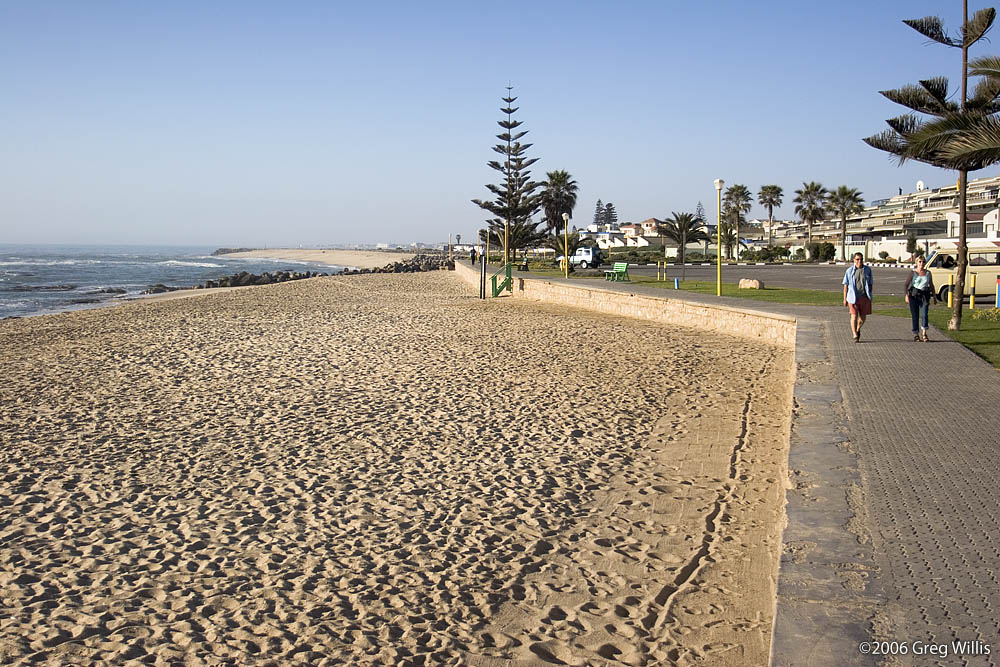The History of Swakopmund
The town’s history dates back to 1487, when Portuguese navigator Bartholomew Diaz made landfall at Cape Cross in Namibia and built a stone cross.
Two Dutch seamen were about to anchor near the entrance of the Swakop River much later, in 1793.
At the mouth of the Swakop River in 1862, the crew of a German warship raised the German flag to signify the occupation of the area.
In August 1892, a different gunboat marked the potential landing spot with poles. The German Reich’s sovereignty of this coastal region was made clear to the English, who were occupying Walvis Bay’s harbor, by this sovereign act.
Geographically, Swakopmund is positioned near to the Swakop River’s mouth amid dunes and desert.
Although the conditions were not particularly favorable—the coastline waters were far too shallow, there was no protected lagoon, and the surf was much too strong—Swakopmund was a significant harbor during the colonial era.
Also Read: Tippi Degre: The Young White Girl Who Grew up with Wildlife in Namibia
Tippi Degre: The Young White Girl Who Grew up with Wildlife in Namibia
Furthermore
The harbor at Luederitz was too far away, and the adjoining harbor at Walvis Bay was occupied by the British.
Because it was dangerous to unload residents and soldiers on surf boats, a man-made harbor was constructed at great expense, and regular freight traffic began in 1894 under the direction of a Hamburg shipping firm.
A 325-meter-long wooden jetty was first constructed in 1902; it was later replaced with an iron jetty in 1912. The colony’s entire supply was managed through Swakopmund.
Even now, the ruins of this Jetty are still visible, and in 2010, an oyster bar even opened there.
The first German-South West African railway line between Swakopmund and Windhoek was inaugurated on July 1st, 1902, to improve the available modes of transportation.
The Namib Desert is more than 100 kilometers wide, and the 382 km of route to Windhoek required a rise of 1673 meters above sea level.
Today, a narrow-gauge railroad connects Windhoek to Walvis Bay via Swakopmund, with passenger wagons joining the freight train on select weekdays.
Additionally, Swakopmund and Windhoek are connected by the opulent passenger Desert Express.
Also Read: What is a Safari, and How Does a Modern-Day Wildlife Safari in Africa look like?
What is a Safari, and How Does a Modern-Day Wildlife Safari in Africa look like?
Namibia’s Swakopmund The greatest genuine custom safaris in Africa
With its colonial architecture, seaside promenades, historical sites, cozy guesthouses, outstanding restaurants, and beer halls where you can experience traditional German food and beer, the laid-back town has charm in spades.
From boating and kayaking excursions out of Walvis Bay to see the diverse marine life of the Atlantic Ocean to birding at Sandwich Harbour farther south, Swakopmund is a great base for exploring the coast.
It is also a hub for adventure activities, making it simple to fill many days with heart-pounding excitement. You may choose from skydiving, quad riding across the desert, or sandboarding down the enormous dunes just outside of town.
Another family-friendly day trip is the Welwitschia Drive, a short road trip route that takes you through some fascinating places in the Namib-Naukluft National Park, including to the oldest welwitschia plant in the world, an ancient specimen thought to be more than 1500 years old.
The living desert tour is a lovely activity for families where you walk in the Namib with a guide teaching you about the fascinating plants and animals that have adapted to the harsh environment.
